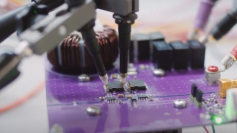Car production in the United States has dropped to a rate not seen since the Second World War. Fewer cars are now being built in the world's second-largest auto market as stay-in-place orders and shutdowns are now being imposed due to the ongoing coronavirus pandemic.
Apart from the lowered production rates, the US auto market is also facing a slump in overall consumption as people buy fewer cars amid the crisis. Automakers have been rolling out attractive offers to lure in new car buyers, including interest-free loans, no down payments, and seven-year mortgages, but consumption remains at an all-time low.
So far, new car sales in the US have dropped by more than 50 percent coming into the second quarter of 2020. Analysts at Bank of America-Merrill Lynch expects the situation will get worse amid the shelter-in-place orders, which is expected to continue into the end of the month and possibly into May.
As unemployment rates skyrocket and small businesses continue to close, consumer purchasing power is expected to drop. Experts have pointed out that the drop in car sales during this quarter could be the largest one ever recorded in more than 40 years of auto sales data collection. The plunge in sales will likely be higher than the 38 percent decline in sales recorded during the first quarter of 2009, a point in time when both GM and Chrysler were at the brink of bankruptcy.
Over the last five years, annual car sales in the US had hovered at around 17 million units. The five-year successful run for the industry could be at an end this year as analysts expect sales to reach only around 14.6 million by the end of the year. Some analysts predict an even lower number depending on how the government will respond to the current health and economic crisis.
Vice-president of research at the Center for Automotive Research, Kristin Dziczek, expects the number to be as low as 10 million to 12 million this year. She pointed out that the restarting process will sap a lot of the automakers' resources more than the halting of production itself.
During the restarting process, Automakers will have to ensure that their suppliers can get back on their feet following the months of having no business. Automakers will also have to ensure the safety of their employees as they return to work at their manufacturing facilities and dealerships. The companies will also have to shoulder hefty payments to employees they had to let go as a result of the shutdowns.
Finally, automakers will have to find ways to reinvigorate demand for their products. This can prove to be very difficult given that millions of Americans will have lost their jobs and most will still be reeling in from the financial effects of the crisis.





